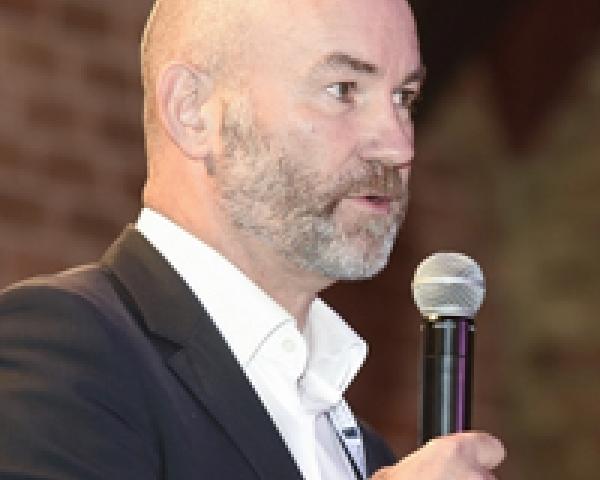“We asked carriers for more flexibility, but all they offered us was a dedicated fax machine!“This gave them a digital face, but, behind the scenes, much of what they did looked like a traditional broker operation. They were restricted in their efforts to adapt the insurance experience to meet the digital profile of the ride-share drivers. David explained, “We asked carriers if they would give us some binding facility, but all they offered us was a dedicated fax machine! “Then we saw what Munich Re was doing with Digital Partners, and we reached out to Andy Rear. After an initial meeting with Andy in New York, we signed a partnership agreement with MRDP and launched as an MGA in New York last year. The next logical step for us was to launch in the U.K., and we strengthened the team by hiring a good taxi underwriter who understood the U.K. market. We then started working with Uber and collaborating on how we could use their driver data for underwriting purposes.” Inshur is a service-driven, engagement model It’s clear to me that Inshur wants to be more than just a distributor of insurance products for the gig economy. The service features they are building into the platform offer value over and above a cheap price and an easy-to-buy insurance product. It’s what I would call an engagement model. In New York, Inshur has a partnership with a dash-cam provider called Nexar. It’s a self-financing no-brainer for the driver who pays $49 for the camera and, in return, gets a 10% discount on the premium, typically worth about $450! The deal works for Inshur, too, which gets access to the footage of any incident/accident. The dash cam also collects telematics data that provides useful corroborating evidence in any claim. When it comes to claims, the Inshur approach is all about getting the driver back on the road as quickly as possible. Business interruption cover can be challenging when it comes to getting a plated replacement vehicle for the driver, in which case the solution is to pay the driver while he is off the road and get the car fixed as soon as possible. Managing different regulatory environments Launching in New York and London has created challenges managing very different regulatory environments. David explained: “In the U.K., it’s much harder to get an FCA license, but, once you have it, you can be very flexible on pricing compared with the U.S. It’s the other way round In the U.S. In New York, you can get an insurance license quite easily by submitting a form, but you don’t have the same freedoms on pricing. In the U.S., all prices have to be agreed with the regulator and published in advance.” The logic to the U.S. approach is that the regulator is protecting the market against new players undercutting market rates and then failing, leaving an exposure. I know from talking to many founders that it can be difficult to get the regulator to agree with pricing no matter how compelling the proposition for digitally removing cost and inefficiency. The regulators are there to safeguard the customer, not give a free ride to the startup, after all. Putting the insurance customer first When it comes to underwriting Uber drivers, Inshur uses around 50 different rating factors. These are a mix of proprietary data and publicly available data sources from simple processes, such as the scan of a driving license. This data gathering reduces the time on the application process and builds a much richer and more accurate driver risk profile. One of the significant factors in underwriting used by Inshur is the driver’s Uber rating. Any driver with an Uber rating of 4.99 is going to be rated a much better risk than one at, say 4.5. This rating is much easier to use in the U.K. than it is in New York, but, with their U.K. experience, Inshur will be able to show the New York regulators that the Uber rating is a reliable factor when pricing premiums. For the ride-share drivers, insurance is a high fixed cost, and Inshur has introduced flexible pricing models to fit the needs of the drivers. Currently, about 90% of their ride-share drivers buy the monthly policy. At each monthly renewal, a simple process involving one click in the app re-rates drivers based on any changes to their Uber rating. See also: Gig Economy: Newest Tool for Insurance However, Inshur haven’t gone as far as moving to a pay-as-you-drive model like the one Metromile has in Los Angeles. I asked David about the need for flexibility and how he saw the market developing for ride-share insurance. “Simpler is better,” he told me. “We have found that the gig economy drivers want a simple annual/monthly policy that enables them to drive when they want, for whoever they want. We haven’t found much appetite for on-demand. When you think about it, it doesn’t make a lot of sense to keep turning the insurance on and off. It becomes too complicated when most drivers have multiple apps and are signed up to drive for everyone: Uber, Lyft, Juno, etc. They flip between the different platforms to the next ride; they don’t mind where it comes from. Any insurance product that was based on on-demand would need to be smart enough to flip seamlessly between the different ride-share platforms.” I tend to agree with David; simpler is always better than complicated, unless it can be completely hidden inside a black box, which isn’t practically possible just yet. This article for Linkedin is part of an op-ed first published on The Digital Insurer. The full original article can be found here.
Insurtech's Approach to the Gig Economy
A founder says, “We asked carriers if they would give us some binding facility, but all they offered us was a dedicated fax machine!"








